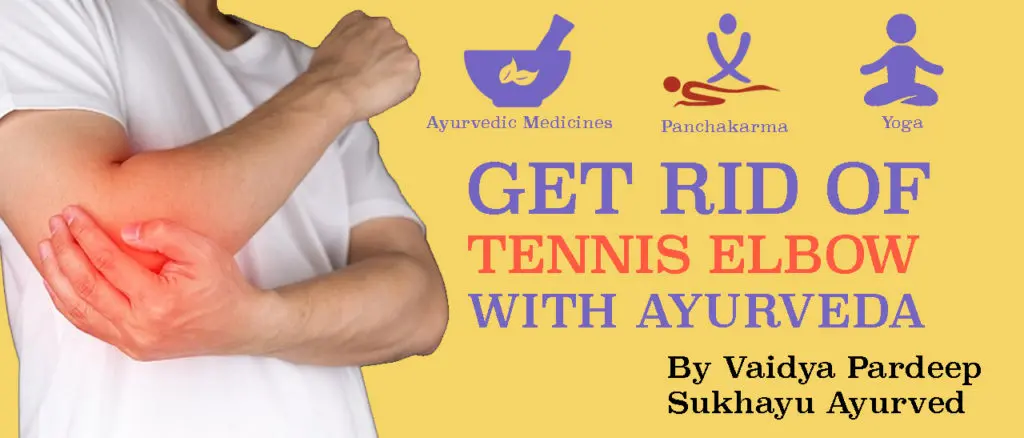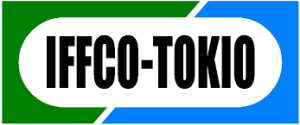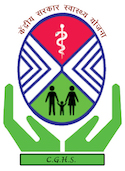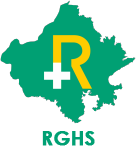If you have seen Sachin Tendulkar playing Cricket in his best times. You should have heard about his injury and this injury was disheartening to all cricket fans. This was a tennis elbow. But many thought he never played tennis, how he got tennis. Tennis elbow has nothing to do with playing tennis. How one holds racket in hand with a particular angle of the elbow. Sachin took years to come out of this problem. Sachin did not come to Ayurveda, his bad luck. Ayurveda treats tennis elbow more efficiently and quickly.
The name of this disease may make you think that only athletes develop this condition. Nevertheless, despite its name, anyone whose job includes repetitive movements of the arm and wrist may develop tennis elbow.
It is common in painter, carpenter, butcher, and plumbers.
Tennis elbow is – lateral epicondylitis. It is a painful condition that develops when the tendon in our elbow strains. This happens due to the repetitive motions of the arm and wrist.
The characteristic feature of tennis elbow is the pain that primarily occurs where the tendon of the forearm muscles attaches to the bony bump on the outside of the elbow. The pain may also spread to the wrist and forearm.
Facts on Tennis Elbow
- Tennis elbow happens due to a small tear in the tendon that joins the forearm to the outside of the elbow.
- About 50% of tennis players experience tennis elbow.
- You do not need to be a tennis player to develop tennis elbow. Anyone can get it whose work includes overuse of forearm with incorrect wrist action.
- To treat the tennis elbow, steroid injections, support devices, and physiotherapy are only solution with modern medicines. In addition, there are certain exercises to improve the strength of the supportive muscles of the shoulder and in the arm. Western medicine suggests painkillers to relieve tennis elbow. Like any other condition, later or sooner doctors advise for surgery alone.
- In most cases, people experience tennis elbow in the dominant arm.
- One of the characteristic features of tennis elbow is that on squeezing things, the pain intensifies.
- The backhand is more likely to cause tennis elbow in tennis players.
- Men and women of all ages may experience tennis elbow; however, it is more common in between 30 to 50 years of age.
- If untreated, the recovery from tennis elbow takes a few weeks to months or may lead to chronic pain.
- Tennis elbow confuses with golfer’s elbow due to similarity in the symptoms. The difference is that in tennis elbow occurs in lateral side. But contrary to this golfer’s elbow, the inner region pains.
- The symptoms of tennis elbow begin as mild and worsen over weeks and months. Injury is not always there in case of tennis elbow.

Symptoms of Tennis Elbow
Here are the symptoms of the tennis elbow…
- Elbow pain which is initially my but gradually gets worse
- The pain extends from the outside of the elbow and runs down 24 hours and wrist.
- The pain is located on the lateral or the outer side of the elbow.
- The patient feels pain when the arm is fully extended or straighten or when you raise your hand.
- A weak grip
- Squeezing an object or shaking hand increases the pain
- Pain is felt while using tools, lifting something, or opening jars.
- You may also feel pain in performing necessary actions such as making a fist, gripping a small object, or writing.
- Pain while twisting the forearm that is noticeable when you extend your forearm or turn the door handle.
The pain present in tennis elbow is present each time in the same area but may be of three types:
Pain from the muscles – Lateral epicondyle is the anchor point for six types of muscle. Knots in these six muscles can refer the pain to this point and make it tender and painful.
Pain from the nerve – Radial nerve runs from your neck throughout the armpit and then right past the lateral epicondylitis. Any pressure on this nerve in the neck can also make lateral epicondylitis hurt.
Pain from the tendon – Wear or inflammation in the tendon at the point where the tendon inserts into lateral epicondylitis lead to pain.
Causes of tennis elbow
3 % of people between 30 to 50 years of age are affected by tennis elbow. It is caused due to activities that strain the muscle around the elbows repeatedly.
Risk factors for tennis elbow
Not only you get tennis elbow from playing racquet sports such as tennis or squash, but also any activity that involves repeated motion such as:
- Cutting down trees
- Painting
- Carpentry
- Playing some types of musical instruments
- Kitchen work, such as cutting with a knife
- Plumbing
- Working on cars
- Working on an assembly line
Any direct trauma or blow to your elbow may also make attendance.
How Tennis Elbow Occurs
The elbow joint is made up of three bones upper arm bone (humerus) and the two bones in the forearm (the radius and ulna). The bony bump on the outer side of the elbow is known as the lateral epicondyle. Ligaments, muscles, and tendons hold the joint together. The forearm tendons attach muscles to bone and connect to the lateral epicondyle. The Tennis elbow involves tendons and muscles of the forearm. The tendon that is involved in tennis elbow is known as extensor carpi radialis brevis.
Due to overuse and repetitive motions the muscles and tendons of the forearm, get damaged. There is inflammation of the tendon and the forearm muscles on the outside of the elbow. The extensor carpi radialis brevis (ECRB) muscle may get small tears. This leads to tenderness and pain on the outside of the elbow.
The tears may put stress on the rest of your arm, making it painful to lift and grip things.
Forearm muscle extends to the wrist and forearm, and so the pain radiated to the forearm and wrist.
In tennis players, it is common because hitting a backhand puts extra stress on the forearm muscles, which clenches on hitting the ball. If in case, you grip the racket tightly more pressure is on the tendons that connect the elbow to the forearm muscle
If you do not get proper treatment, the pain can last for a long time.
Ayurveda Treatment for Tennis Elbow
Ayurveda gives promising results in tennis elbow. The treatment of tennis elbow is not about pain management.
There are two things we do in case of tennis elbow-
- Strengthen the ligaments of the elbow.
- Reducing the local inflammation.
We do Panchakarma for this condition along with medicines. And total duration of the panchakarma is just 7 days only.
And Ayurvedic medicines continues for two to three months. Alone medicines cannot help in this case.













